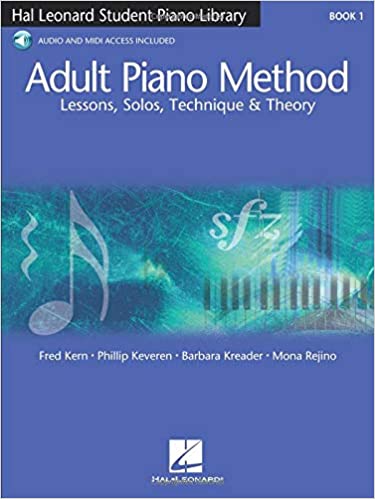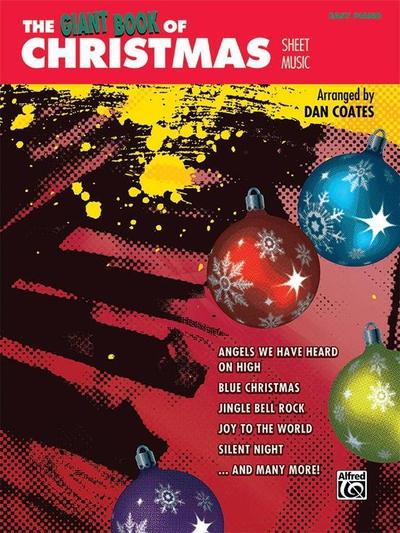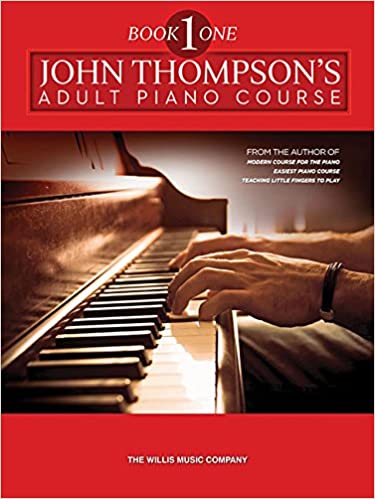When you’re ready to start learning piano, you may not be ready to start taking lessons right away. Here’s how you can start to teach yourself the basics at home. Eager to start learning piano? Start right at home! Learn how to teach yourself piano with these proven tips and tricks.
With 88 keys to memorize and about 45,000 pounds of tension to deal with, playing the piano is no doubt both physical and mental work. All that hard work is worth it though, once the pianist hits those notes and produces beautiful sounds.
That’s not all that makes piano amazing though. According to a study, learning piano can help boost children’s language skills. There’s also the fact that pianists’ brains have a different (and impressive) brain capacity.
So you want to learn how to teach yourself piano, but don’t know where to start.
Fortunately, you only really need 2 things: a piano, and a willingness to learn. You can worry about things like sheet music later.
The following guide will walk you through the learning process of acquiring, familiarizing, and practicing your piano.
How To Teach Yourself Piano in 10 Steps:
Remember that learning any instrument takes a commitment to practicing regularly. So if you’re ready to learn, and committed to practicing a lot, let’s get started!
1. Get A Piano/Find Yourself a Keyboard

The obvious first step is to acquire a piano for yourself. Set a budget, do your research on different types of pianos, and look online and in your community for deals.
Some things to consider:
Many music stores rent keyboards. If you want to rent before you’re sure the piano/keyboard is right for you, this might be a good place to start.
If any of your friends or family are involved in the music world, reach out. They may know someone dying to sell an old instrument that isn’t getting used for half what it would cost coming out of a box.
If you’re unable to find a piano, a keyboard is a great alternative. They’re affordable, never go out of tune and have lots of sounds and features that can enhance your music. Not to mention, they’re a lot easier to move around and don’t take up much space. A learning keyboard is a great tool for a beginner. These specialty instruments light up in a specific order to help you learn songs more quickly. Typically, they come with books and videos that will help you learn musical notation. You can always start out on a keyboard and then upgrade to a piano.
Keyboards generally cost less than pianos do. On the plus side, keyboards never go out of tune and take up much less space than a piano will. Wherein, acoustic pianos typically range in price from $2,000 to $10,000 or more for some high-quality concert grand pianos.
2. Get Familiar with Your Instrument
Now that you have your piano or keyboard, spend some time getting familiar with it.
To accomplish this task:
Listen to your new piano. Is it in tune? You might consider having someone tune it for you for the first time. If you went with a keyboard, you can skip this step.
Learn about the keys and their names. If your piano came with a book or you chose to buy one, the keys should be in the piano book. If not, this 5-minute tutorial will walk you through an easy way to learn the keys.
Make sure you understand what proper hand posture looks like. Really listen to each of them, and note how they are different from the others. Keep practicing until you can tell the difference between them. You want to form good habits from the beginning!
3. Train Your Arms and Hands with Proper Positioning
The first step on how to teach yourself to play the piano is to ensure your arms and hands maintain the right-hand position. That’s the “C Position,” which is the natural cupped-shape they form when left hanging to your side. You will also be able to read a selection of notes from both the bass and treble clefs, and you will be able to play some simple piano chords in the left hand.
It’s the same position you need to keep when you put your arms and hands on top of the keys. While doing this, ensure your wrist and forearms remain straight.
Play five-finger patterns all over the keyboard, and in many different keys. Use a lot of black keys! First without notes to learn the geography of the keyboard, and then with notes using “landmark notes” to find your way.
It’s crucial to follow the proper hand and finger positioning since it helps prevent repetitive stress injury. Also, we understand that you’d like to learn how to learn piano fast, but know your limits and don’t over-practice.
4. Know Your Notes
Learning piano means learning a new type of language – that of music. It’s much like how you first learned the alphabet, but in this case, it’s noted that you’ll memorize. With constant practice, you’ll have these committed to memory soon enough.
A good way to start is with the Do-Re-Mi tune (yes, the one from The Sound of Music). Each of these represents a note on the piano, starting with note C. It’ll help you get the notes’ pitch while also learning which keys to press on the piano.
- Do – Note C
- Re – Note D
- Mi – Note E
- Fa – Note F
- So – Note G
- La – Note A
- Ti – Note B
To locate C, look for a pair of black keys (accidentals). Right to their left is C. There are several Cs on the piano, and they’re always eight notes (octave) apart.
F is another keynote to know the placement of by heart at the beginning. It’s the key to the left of a trio of black keys.
Memorizing your Cs and Fs right away makes it easier to memorize the location of the rest of the notes.
5. Familiarize Yourself with Sharps and Flats
The black keys play either sharps (#) or flats (b). They come in either pairs or trios.
When you see a # on a piece, that means you have to play the next higher key. A b, on the other hand, means you need to play the next lower key.
To start, look at the center of the piano. Do you see that group of one pair of blacks and a group of three? That’s where you’ll find the middle C note.
As mentioned above, all Cs appear to the left of two blacks. F to the left of three blacks. So, these ones you find in the middle of your piano are the Middle C and Middle F.
When you press the black key right above and beside the Middle C note, it produces either a C sharp (C#) or a D flat (Db). The black key beside it plays the D# or Eb. As for the black key beside Middle F, it plays F# or Gb.
Do you see the pattern now? Always remember that black keys are always either sharps or flats, but white keys can also play sharps or flats.
6. Set A Practice Goal
Begin with your end goal in mind. You want to learn the piano, but what do you want to play? How long do you want it to take?
What material will you be focusing on? Is that material online or from a book you bought?
What keys or scales do you want to be able to play? What’s your favorite song that did you picture yourself playing when you first started thinking about learning how to teach yourself piano?
What will you be able to play on the piano in seven days? What about 14 or 30? You are just starting to learn how to teach yourself piano, so you probably don’t need goals beyond a month just yet. Focus on the first 30 days!
How long will you practice each day?
7. Start Practicing
The first three parts were leading to the most important step, which is this: Do you really want to learn how to teach yourself piano? Then practice, every day!
Some tips for your practice sessions:
Stick to your goal. If you need a break from the same few scales or chords, try some finger speed exercises.
Practice chords and scales. These will form the foundation of your piano playing, so be sure to do these each day. Start with the major and minor chords!
Learn the major keys. If you want to eventually play by ear and identify the sounds you make, this is important. Easy songs like “Mary Had A Little Lamb” are perfect for this!
As you start playing by ear, also begin noticing patterns. All songs are composed of musical patterns. You’ll want to start identifying and learning these patterns as you work towards your eventual goal of playing songs on the piano.
The internet can be your friend when you’re ready to learn songs. Many sites will allow you to download some of their sheet music for free!
8. Practice Your Fingers
Now that you’ve got your basics down, next is to apply them with your fingers. This way, you can train your fingers to know right away without fumbling. When you are first learning to play the piano, fingering is key. You must know where your fingers are supposed to go when you are starting to play the piano.
A good place to start is the pentascale approach. Pentascales are any scale that has five (Penta) notes. Since you already know by now where the Middle C is, you can begin your finger practice with the C Major pentascale.
To begin, put your thumb on the Middle C note, index on D, middle on E, ring on F, and a pinky on G. Those five notes make up this pentascale.
This is one of the easiest finger practicing techniques since it trains up all your fingers. Now, you want to start slowly, so apply the whole note approach (count four beats before pressing the next key). From here, you can move on to half notes and then quarter notes.
Once you feel more comfortable, you can move up the practice ladder to taking it two notes at a time. That means using two fingers since you’ll press two keys simultaneously. It’s a bit more complex, but it’ll help you prepare for more advanced pieces.
9. Get Your Timing Right
Every note has a count – the length of time you should keep it pressed. In music sheets, you’ll find three most often used, which include the following:
- Whole notes (with four beats)
- Half notes (with two beats)
- Quarter notes (with one beat)
The white circles you see on a music sheet are whole notes. When you see these, it means you have to keep the note for four full beats (as in one-and-two-and-three).
Half notes are also white circles, with a stem attached to them. You hold these notes for two beats (one-and-two).
Quarter notes look much like half notes, except they have shaded circles. They represent one beat.
10. Play With Other People
After some time, it’s a good idea to find other people to practice around or with.
Ask a more experienced piano player if they want to get together and practice, or if they have any resources that helped them learn.
Once you start making progress, do mini “performances” for people, even if it’s your family. They will be able to tell you what sounds great and what could use a little tweaking.
Last, consider taking piano lessons with a piano instructor. An instructor will give you hands-on coaching, accountability for learning the instrument, and teach you how to correct pacing. Plus, if you teach yourself the basics, a piano teacher will help expedite the process to you playing some simple songs you really want to learn!
One good set that many adult beginners have used is the Alfred Self-Teaching Adult Piano Beginner’s Kit. While you might only want to learn how to play current popular music, a piano teacher might introduce you to other genres such as classical music or jazz music.
Wrap Up
In truth, playing the piano requires only two things: having the instrument readily available to you, and dedication to the practice.
How to teach yourself piano can be summed up like this:
Begin by setting a budget and find the instrument that is right for you. Then, get familiar with your new instrument.
After you read through and watch tutorials on things scales and chords and finger posture, decide what you’d like to learn, and how quickly. Set a goal for your piano playing!
Last, start practicing — every day if you can swing it. To accelerate your learning, set a goal of playing around people after a couple of weeks. Even if it’s family, it will give you feedback on what you’ve learned and motivate you to keep working.
There are also piano courses and google resources through youtube videos and online courses that can help you to learn how to play the piano.
Want more tips for learning how to play the piano? Whether they’re for adult beginner piano learning or for your little ones, you’ll find more useful posts in our blog!
If we can help you on your journey to learning the piano, from buying a new one to working with a piano teacher, don’t hesitate to contact us. Now, start practicing!
































